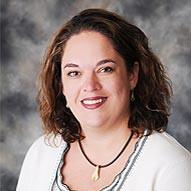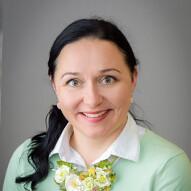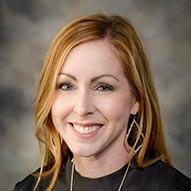Retinoblastoma in Children
Retinoblastoma is the most common childhood cancer of the eye. If it isn’t treated properly, it will grow and cause serious problems. Children's Health℠ has some of the world’s most experienced specialists for diagnosing and treating retinoblastoma. We use advanced testing and treatment options to create a personalized plan for your child. Our expert team provides care that offers the best chance of eliminating the cancer and preserving your child’s vision.
What is retinoblastoma?
Retinoblastoma is a rare type of eye cancer that mostly affects young children, often before age 2. It begins in the retina, the part of the eye that senses light and sends images to the brain. The condition can affect one or both eyes and may cause symptoms such as a white pupil or vision problems.
If not treated, retinoblastoma can spread to other parts of the body and become life threatening. Children’s Health offers the latest therapies, including intra-arterial chemotherapy and intraocular drug delivery. These treatments can be highly successful, especially with early diagnosis.

What are the different types of retinoblastoma?
The two types of retinoblastoma are based on whether it can be passed down due to family history:
Hereditary retinoblastoma can be passed from parents to children. It accounts for about 40% of cases and can affect both eyes.
Non-hereditary (sporadic) retinoblastoma cannot be passed down in families. It accounts for about 60% of cases and affects only one eye.
What are the signs and symptoms of retinoblastoma?
Because retinoblastoma usually occurs in very young children, they’re usually not old enough to complain of symptoms. Parents typically notice changes in their child’s eyes, and common retinoblastoma symptoms and signs include:
Leukocoria (white pupil): Pupils are the small black circles in the center of the eyes, and they’re typically black. With retinoblastoma, a child’s pupil may appear white or glowing in certain lighting, such as flash photography.
Strabismus (misaligned eyes): This condition happens when the eyes don’t look in the same direction. One or both eyes may turn in, out, up or down. Retinoblastoma usually doesn’t cause strabismus, but it may happen for another reason. Children with strabismus should see an ophthalmologist (medical doctor of the eye) to find the cause.
Pain, redness, bleeding and bulging of the eye sometimes occur in advanced retinoblastoma. But these symptoms usually result from another cause. Any child with these signs should see a pediatrician or ophthalmologist as soon as possible to find the cause.
How is retinoblastoma diagnosed?
Diagnosing retinoblastoma requires an ocular oncologist (specialist in eye cancer). This doctor carefully inspects your child’s eyes and performs special tests. During the exam, your child will have general anesthesia (medicine to put them in a sleep-like state).
The tests help the doctor look inside the eye and nearby areas, rule out other conditions and confirm a diagnosis. Your child may need one or more tests, including:
Fundus photography: This noninvasive test takes detailed pictures of the inside of the eye, including the retina. We use this test to find any problems inside the eye, such as tumors.
Ultrasound: This imaging test uses sound waves to create images of the inside of the eye. We do sonograms to identify tumors or other eye issues related to retinoblastoma.
Ocular coherence tomography (OCT): This noninvasive imaging test provides detailed cross-sectional images of the retina. We use OCT to examine possible changes caused by retinoblastoma.
Magnetic resonance imaging (MRI): This imaging test
creates detailed images of the brain, optic nerves and eyes. We may use MRI to determine whether retinoblastoma has spread beyond the eye.
Angiography: Another imaging test, angiography involves injecting a dye into the bloodstream and taking X-rays of the eye's blood vessels. We use this test to assess the tumor's blood supply and plan treatment.
Advanced genetic testing: After diagnosis, we offer this testing to identify children who have hereditary retinoblastoma. Our genetic counselors will explain genetic test results and what they mean for your child and family, including future children.
What causes retinoblastoma?
Retinoblastoma usually happens because of a gene change (genetic mutation) in the RB1 gene. Scientists don’t fully understand what causes the change. The gene change happens at different times in the two types of retinoblastoma.
Hereditary retinoblastoma often affects both eyes and may cause multiple tumors in each eye. It results from one of two causes:
A child inherits a changed gene from one parent. In these cases, the baby is often born with retinoblastoma.
A spontaneous gene change happens in a baby before birth. Children with this type typically develop retinoblastoma before their first birthday.
Non-hereditary (sporadic) retinoblastoma happens when a gene mutation occurs during early childhood, typically after age 1. The exact cause of this mutation is unknown. Sporadic retinoblastoma usually affects just one eye.
How is retinoblastoma treated?
Every child who has retinoblastoma needs treatment. Untreated tumors in the eye will grow, cause blindness and become life threatening.
At Children’s Health, your child’s care is in expert hands. Our Retinoblastoma Program includes world-class pediatric specialists, including an ocular oncologist, retina surgeons, an oncologist and an endovascular neurosurgeon. We have a long track record of excellence and innovation in treating children with retinoblastoma. We work closely with experts in ocular pathology, neuroradiology, genetic counseling and other fields to form one of the premier centers in North America for treating children with retinoblastoma.
Using your child’s test results, our ocular oncology team develops a unique treatment plan. Our goal is to remove all the cancer while preserving your child’s eyes and vision.
Most children need a combination of several treatments. Treatment options depend on the size, location, number and severity of retinoblastoma tumors. We also consider whether cancer is in one or both eyes or has spread to other areas. Our retinoblastoma treatment options include:
Laser therapy: We use focused laser light to treat small tumors or block the blood supply of larger tumors. We usually do laser therapy along with another treatment, such as chemotherapy.
Cryotherapy: This treatment uses liquid gases to freeze and destroy cancer cells. We use cryotherapy to treat certain small tumors.
Systemic chemotherapy: We treat retinoblastoma with medicines that destroy cancer cells. Systemic means that the medicines travel through the body to treat cancer. We can deliver systemic chemotherapy through a vein (intravenous, or IV) or directly into the eye by injection. We use systemic chemotherapy with laser therapy, cryotherapy or both to ensure that cancer cells don’t grow again.
Intra-arterial chemotherapy: This chemotherapy technique delivers cancer medicines directly into the eye through an artery behind the eye (details below).
Enucleation (eye removal surgery): Sometimes, retinoblastoma tumors are large or grow into nearby eye tissues. The only safe option for these cancers is to remove the eye. An expert pediatric oculoplastic surgeon on our retinoblastoma team performs the surgery. This surgeon is an ophthalmologist with additional fellowship training in plastic surgery for structures around the eye. Most children recover quickly and have little or no trouble adjusting their vision. We fit children with an artificial eye that closely matches their other eye.
Intra-arterial chemotherapy for retinoblastoma
Children’s Health is the only health system in North Texas – and one of a select few centers nationwide – to offer intra-arterial chemotherapy (IAC) and other advanced diagnostics and treatments for children who have retinoblastoma.
IAC delivers carefully selected chemotherapy medicines directly into the eye through an artery. With IAC, we can deliver a higher dose of chemotherapy to the eye for more effective treatment, while reducing side effects to the rest of the body.
IAC is one of the latest advances in treating retinoblastoma and provides a treatment option for one or both eyes. We can perform the treatment at the same time for both eyes. Your child will have general anesthesia for the procedure.
Retinoblastoma in children doctors and providers
Our connection to UT Southwestern means that you and your child have access to some of the world’s top eye and cancer specialists. They collaborate with surgeons and other experts who specialize in kids and provide a complete treatment plan for your child.
 Daniel Bowers, MDPediatric Hematologist/Oncologist
Daniel Bowers, MDPediatric Hematologist/Oncologist Kenneth Chen, MDPediatric Hematologist/Oncologist
Kenneth Chen, MDPediatric Hematologist/Oncologist James Harbour, MDPediatric Ophthalmologist
James Harbour, MDPediatric Ophthalmologist Samuel John, MDPediatric Hematologist/Oncologist
Samuel John, MDPediatric Hematologist/Oncologist Laura Klesse, MDPediatric Hematologist/Oncologist
Laura Klesse, MDPediatric Hematologist/Oncologist Andrew Koh, MDPediatric Hematologist/Oncologist
Andrew Koh, MDPediatric Hematologist/Oncologist Patrick Leavey, MDPediatric Hematologist/Oncologist
Patrick Leavey, MDPediatric Hematologist/Oncologist Kathleen Ludwig, MDPediatric Hematologist/Oncologist
Kathleen Ludwig, MDPediatric Hematologist/Oncologist Avanthi Shah, MDPediatric Hematologist/Oncologist
Avanthi Shah, MDPediatric Hematologist/Oncologist Ksenya Shliakhtsitsava, MDPediatric Hematologist/Oncologist
Ksenya Shliakhtsitsava, MDPediatric Hematologist/Oncologist Tiffany Simms-Waldrip, MDPediatric Hematologist/Oncologist
Tiffany Simms-Waldrip, MDPediatric Hematologist/Oncologist Tamra Slone, MDPediatric Hematologist/Oncologist
Tamra Slone, MDPediatric Hematologist/Oncologist Dale Swift, MDPediatric Neurosurgeon
Dale Swift, MDPediatric Neurosurgeon Tanya Watt, MDPediatric Hematologist/Oncologist
Tanya Watt, MDPediatric Hematologist/Oncologist Jonathan Wickiser, MDPediatric Hematologist/Oncologist
Jonathan Wickiser, MDPediatric Hematologist/Oncologist Naomi Winick, MDPediatric Hematologist/Oncologist
Naomi Winick, MDPediatric Hematologist/Oncologist
Frequently Asked Questions
What is the prognosis of children diagnosed with retinoblastoma in children?
What are the first signs of retinoblastoma?
How is retinoblastoma inherited?
At what age is retinoblastoma diagnosed?
Children's Health Resources
American Cancer Society: Retinoblastoma

American Optometric Association: Retinoblastoma

Children’s Health research library: Using intra-arterial chemotherapy to treat retinoblastoma in children
National Institutes of Health, National Cancer Institute: Retinoblastoma
